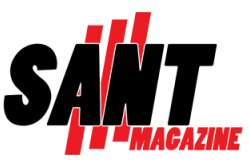Demand forecasting can assist your retail business in satisfying consumer demand in a timely fashion by ensuring that you are optimally stocked with your inventory across tour supply chain nodes. You can align your supply chain with your business goals by correctly predicting the demand for your services and products.
Earlier, demand planners used excel sheets and spreadsheets to anticipate the demand. This process is based on a lot of guesswork, and you leave a lot of scope for errors and might not always predict demand correctly.
Are you still dependent on guesswork for anticipating sales? You should check out the latest demand forecasting software to estimate future demand fluctuations. Such software considers several factors influencing demand and allows retail businesses to plan their production and cash flow. The software can also be integrated with sales and operations planning processes to keep every operation running smoothly and enhance collaboration between departments.
You need a demand forecasting software that incorporates all the data from CRM, ERP, and external data for generating valuable insights. Thus, you would know beforehand how much stock to keep in inventory/reorder to minimize the circumstances of overstocking and understocking.
What do I need to software to do?
It would be really unwise to say that a demand forecasting software can meet your requirements without you having the knowledge of your needs, budget, maturity, resources, data, value chains, and more. It is also irresponsible for a vendor to sell you something without comprehending your business and procedure. It is not good enough for you if a system offers only 80% of what you require. However, you do not have to settle down or compromise – there are a lot of options out there to get what you want.
The initial step every business must take when searching for a new demand forecasting software is to understand and identify its process, system needs, technical needs; limitations and budget; also a comprehensive list of requirements. Most systems have the typical industry-standard time series forecasting patterns, but you may also require a few of the more advanced equipment on the market such as advanced analytics, machine learning, Monte-Carlo simulation, Stochastic Optimization, and AI.
Passing through the designing procedure first enables you with a systematic way to function from abstract ideas to physical designs and specific technical details for the solution, for example, you begin with the advantage you want to benefit from the system and backpedal unless you get to particular features.
Outline Demand Streams in a Specification Document
To make certain that you choose the correct technology for your operation, it is important to outline the demand drivers and the demand streams. Consider a process diagram that assists in visualising each step, including outputs and inputs, along with the data and the technology you depend on which needs to be unified. Techniques, such as casualty, top-down and bottom-up forecasting, forecast-value add analysis, and seasonality are critical to the technology’s selection, as the demand forecasting software you select must support them.
Think of your customers. No, not certainly the end users of the company’s goods, but the occasional internal clients of your demand and forecasting plans. These include operations, finance, supply planning, and so on. Every internet user might look at the forecast in different time horizons and at different stages of aggregation and might require non-identical levels of forecasting accuracy.
From here it becomes convenient to create a comprehensive functional specification document which gives guidance and direction for what you require and what you must have when you begin to compare solutions. Just chalk out what you need in this list. Make sure to add the models you use, the input and data requirements, and the procedure steps you require to provide support, as well as the information and metrics you want out of it. Address process and collaboration, functionality, and technical needs as well. Your company’s list can contain 10 items or 50 items. Take the time and add your must-haves as well as the things you would like to have.
Features Checklist
Usual requirements might include, but are not limited to the following:
- A comprehensive range of statistical forecasting techniques. Demand plans might utilize more advanced techniques and a holistic way of statistical forecasting (for example AIRMAX, cluster analysis, econometric, and so on.)
- Forecast generation by using dynamic multiple hierarchies as well as complex events or use of hypothetical scenarios and pricing models.
- Overrides are performed at different levels by different clients, with hierarchy reconciliation.
- Handles demand planning consensus workflow.
- Measuring error in demand forecast with an understanding of causes and limited accountability (for example. MAE, WMAPE, MAPE, Bias)
- Evaluating performance to measure the worth of the demand planning forecasting procedure rather than just the output (for example, FVA and tracking signals)
- Graphic and segmented results are based on hierarchy, differentiating lags, segments, and process steps or inputs.
- Ability to make use of external data signals and POS.
- Easy integration and reliability, and a high level of available support.
- Languages/Global presence and support.
- Supports several calendars (fiscal, production, and so on.)
About Fountain9
Fountain9’s demand forecasting software, Kronoscope, is an efficient tool that provides all of the features that are mentioned above and assists businesses in obtaining meaningful insights from past sales data by taking into consideration several factors such as customer trends, seasonality, promotional marketing, and other things for accurate forecasts. It helps maintain optimal stocks in the inventory while taking into account the supplier lead times. It delights customers and increases loyalty by meeting consumer demand at the right time.

